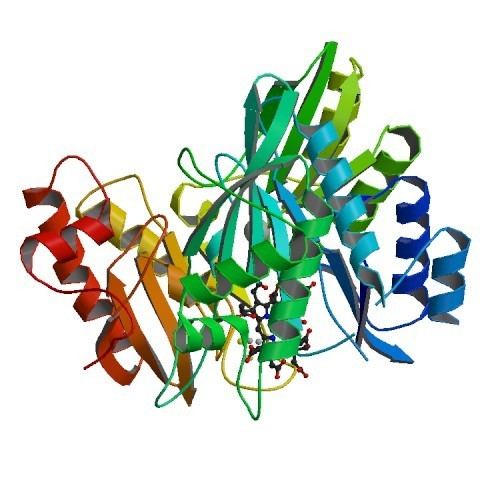EC number 1.8.99.1 ExPASy NiceZyme view | CAS number 37256-51-2 | |
 | ||
Sulfite reductases (EC 1.8.99.1) are important enzymes in the process of sulfur metabolism. They catalyze the reduction of sulfite to hydrogen sulfide and water. Electrons for the reaction are provided by a dissociable molecule of either NADPH, bound flavins, or ferredoxins.
Sulfite reductases belong to the family of oxidoreductases, and are found in archaea, bacteria, fungi, and plants. They are grouped as either assimilatory or dissimilatory sulfite reductases depending on their function, their spectroscopic properties, and their catalytic properties. This enzyme participates in selenoamino acid metabolism and sulfur assimilation. It employs two covalently coupled cofactors - an iron sulfur cluster and a siroheme - which deliver electrons to the substrate via this coupling.
The systematic name of this enzyme class is hydrogen-sulfide:acceptor oxidoreductase. Other names in common use include assimilatory sulfite reductase, assimilatory-type sulfite reductase, and hydrogen-sulfide:(acceptor) oxidoreductase.
